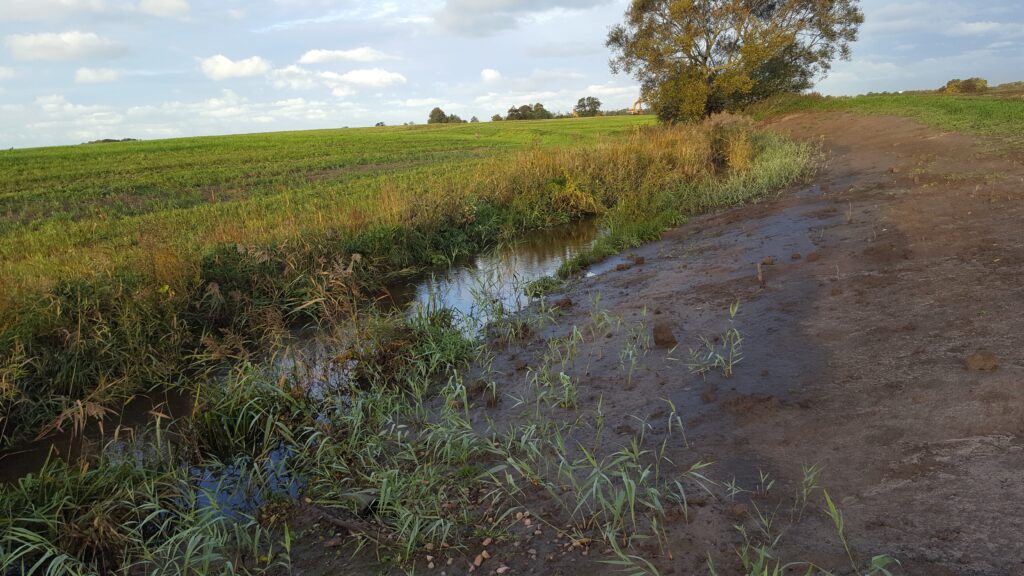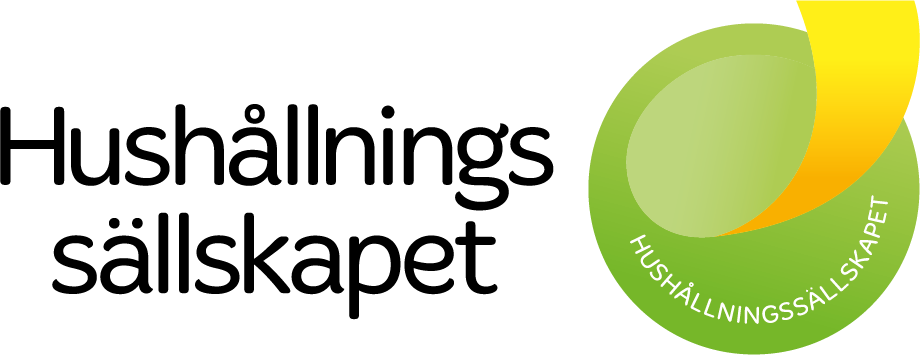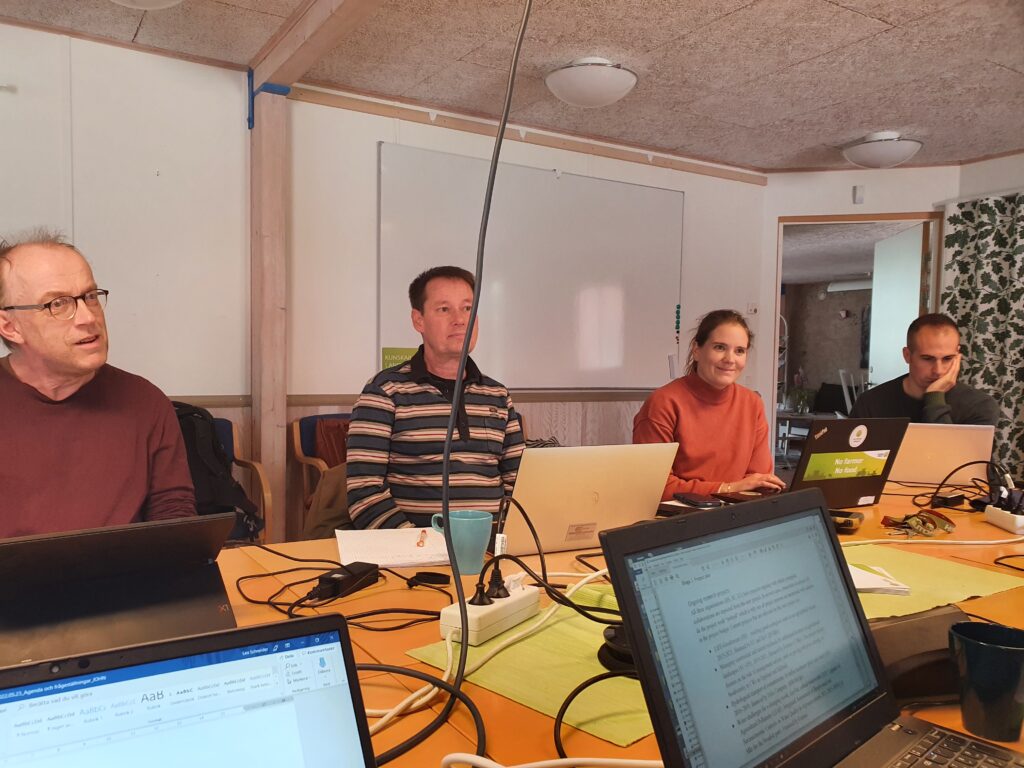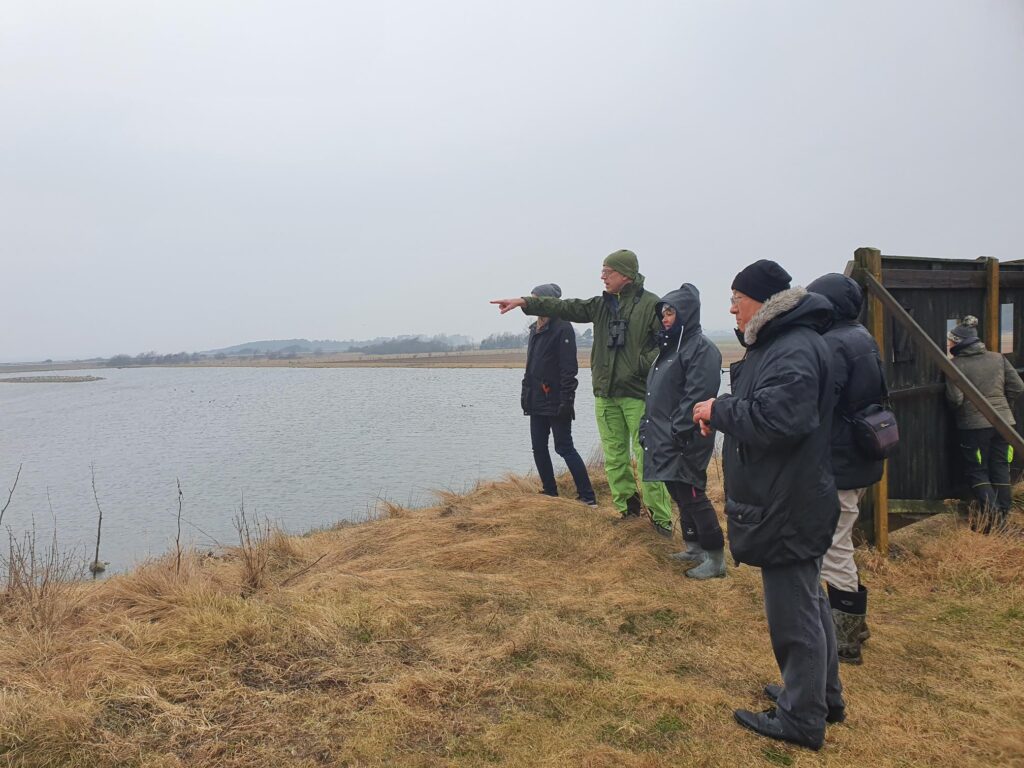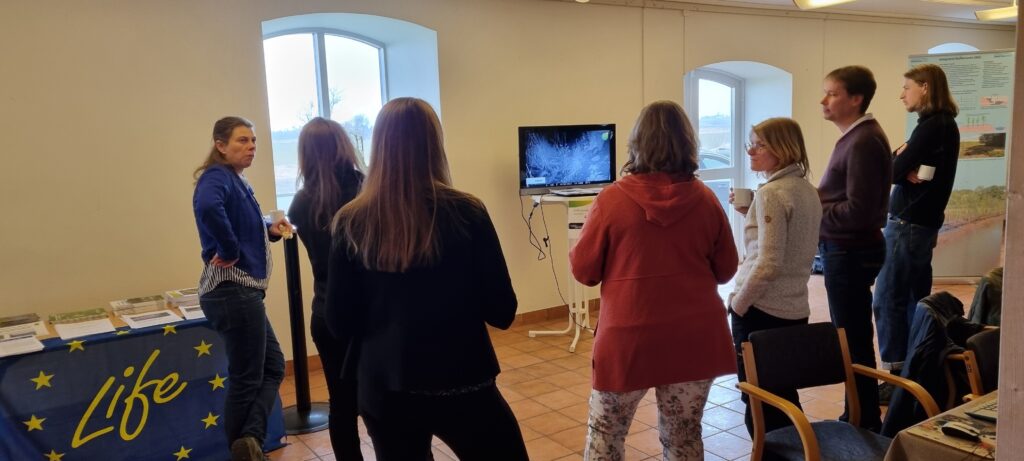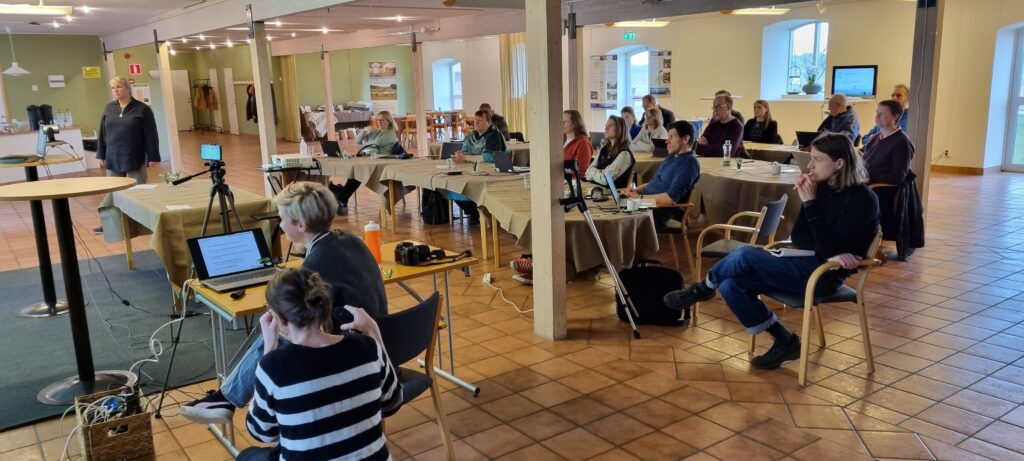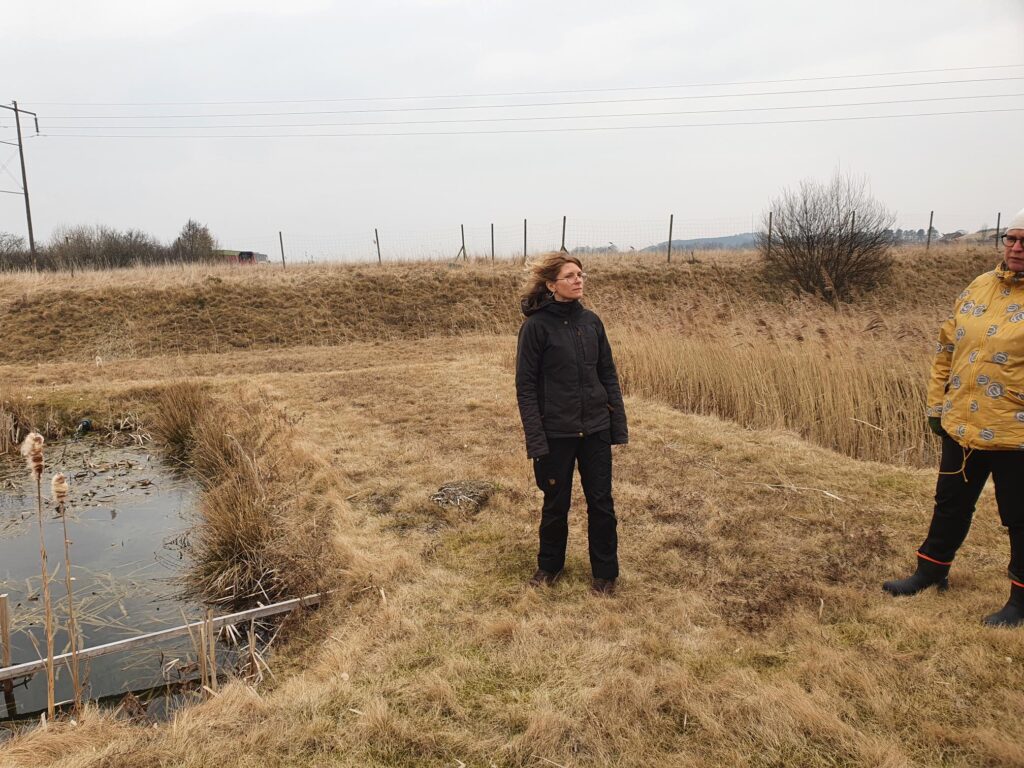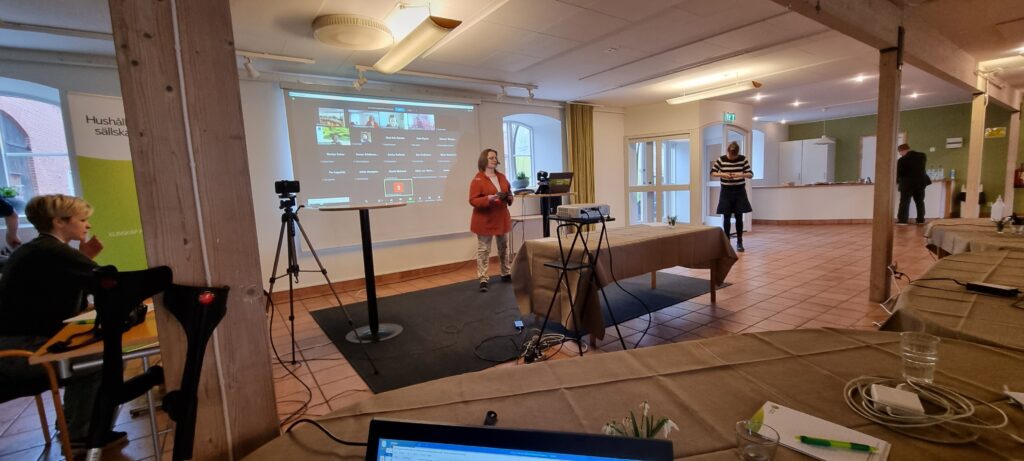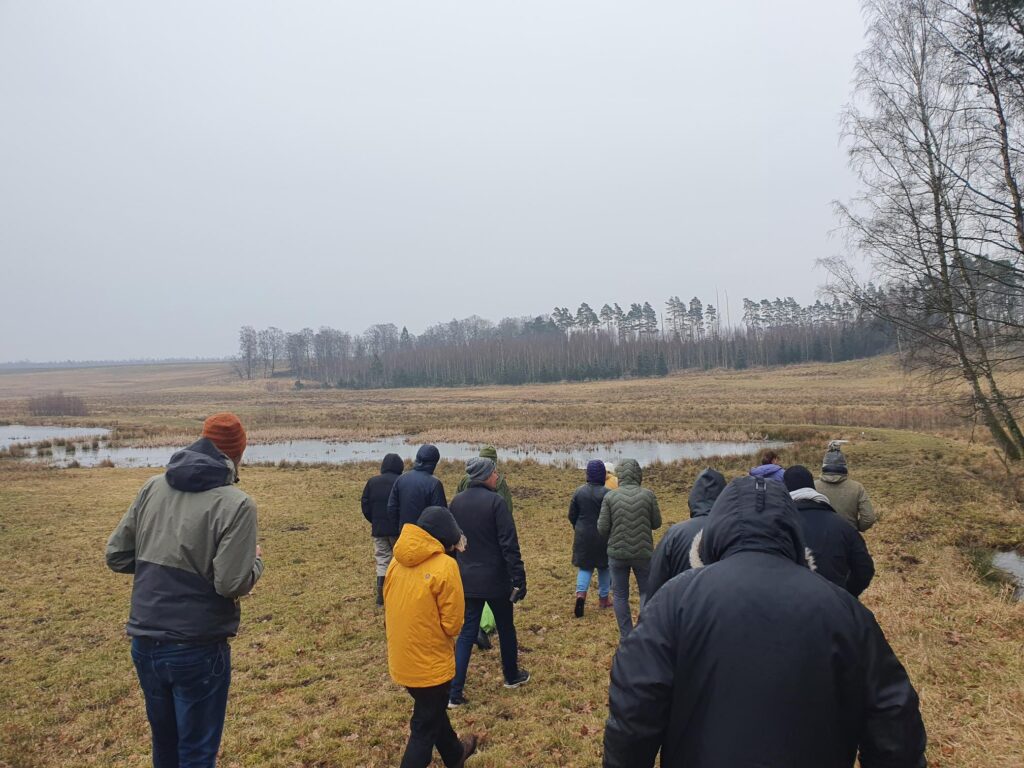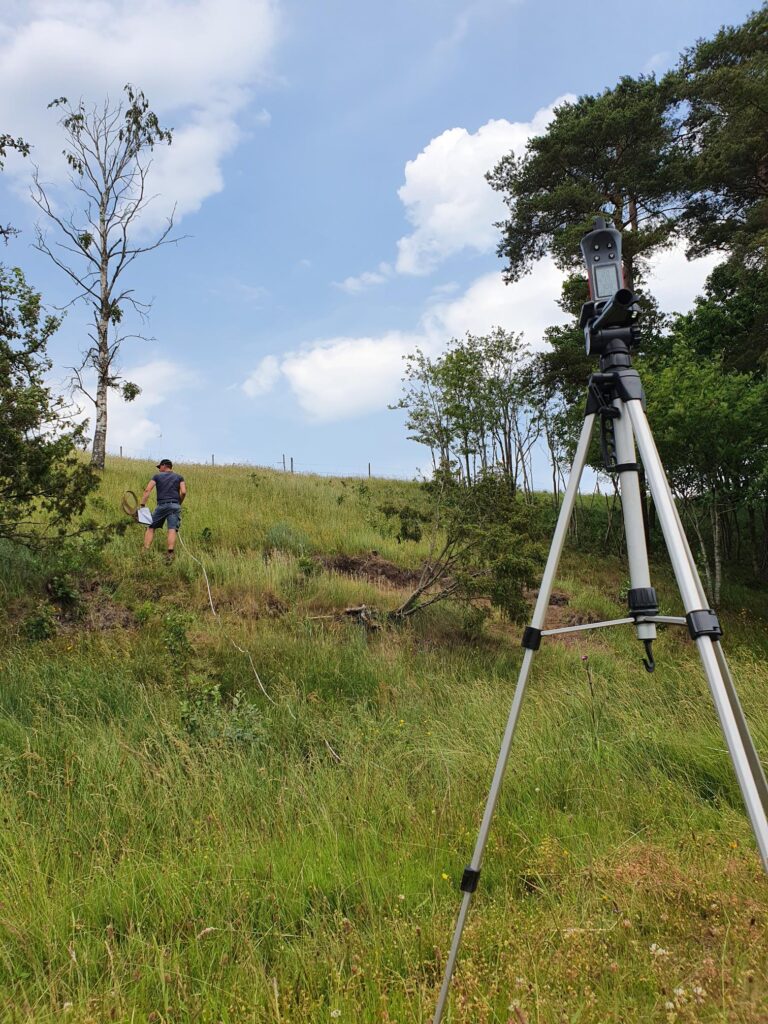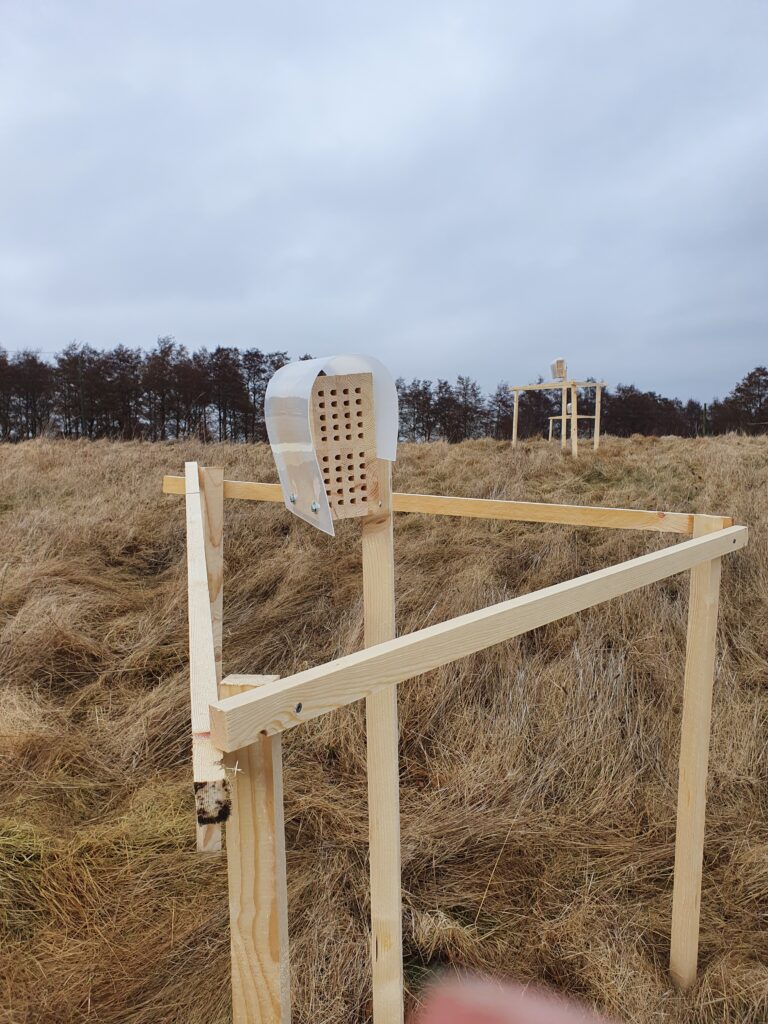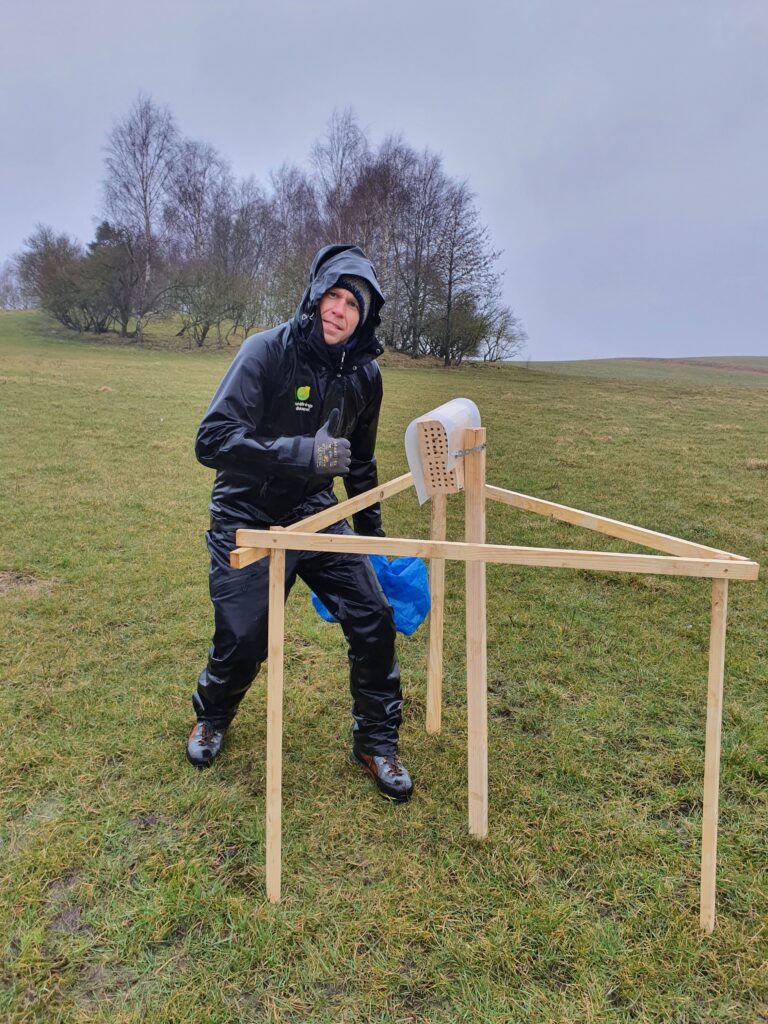Activities
End Conference
We will arrange an joint end conference forLIFE-Goodstream, Wetlands as buffers and Wetlands 2.0, the 14-15 of December 2023. Feel free to register at John.strand@hushallningssallskapet.se The agenda can be viewed here.
A popular science publication as a result of project surveys
The data from the surveys of dragonflies in the project was, together with data from the project LIFE-Goodstream, compiled into a guidebook to the public and to the landowners. The aim is to raise awareness of wetlands and their biodiversity by focusing on dragonflies which are relativiely easy to study. The guidebook (80 pages) show all species recorded in Halmstad and give help on how to study dragonflies and include maps to 12 different sites that are good for ”dragonly hunting”. The book can also be downloades as a pdf via the link: Trollsländor i Halmstads kommun.
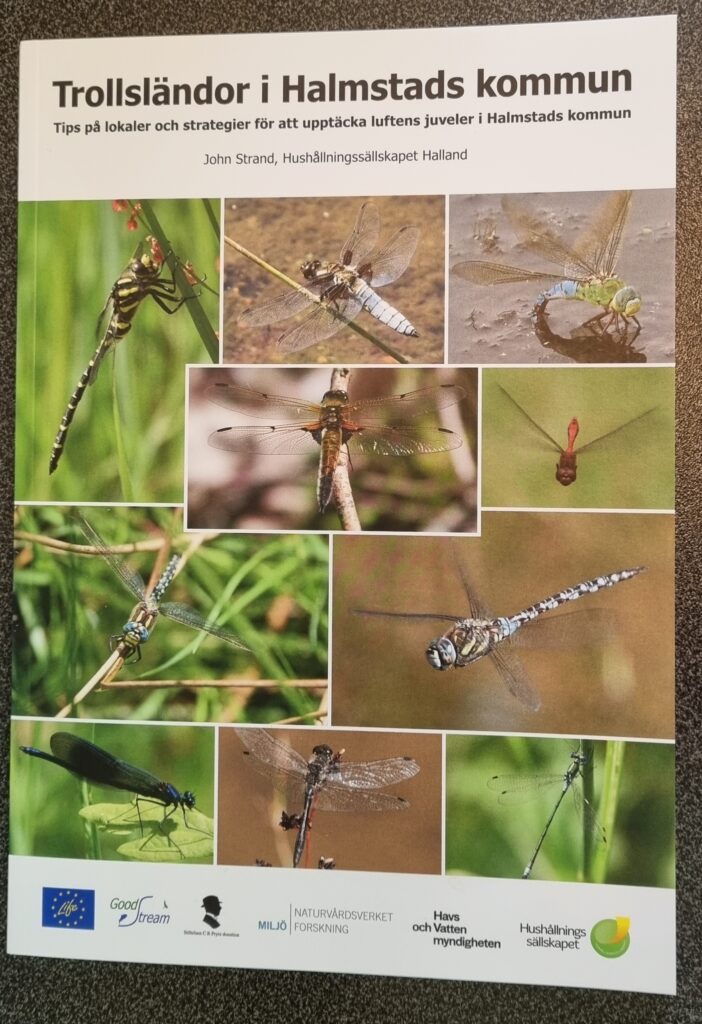
Two upcoming presentations of our work
The 31 of May, Peter will talk about multifunctionality of wetlands at ”Baltic Breakfast” (https://www.su.se/stockholms-universitets-ostersjocentrum/policyverksamhet/baltic-breakfast#kommandebalticbreakfastolikav%C3%A5tmarkerkr%C3%A4vsf%C3%B6rattn%C3%A5olikam%C3%A5l). It can also be viewed after the event at the link above.
The 25-26 of May John will present some results from our project at a water conference at the Bolmen Research station https://forskningsstationbolmen.se/valkommen-till-vattenkonferensen/
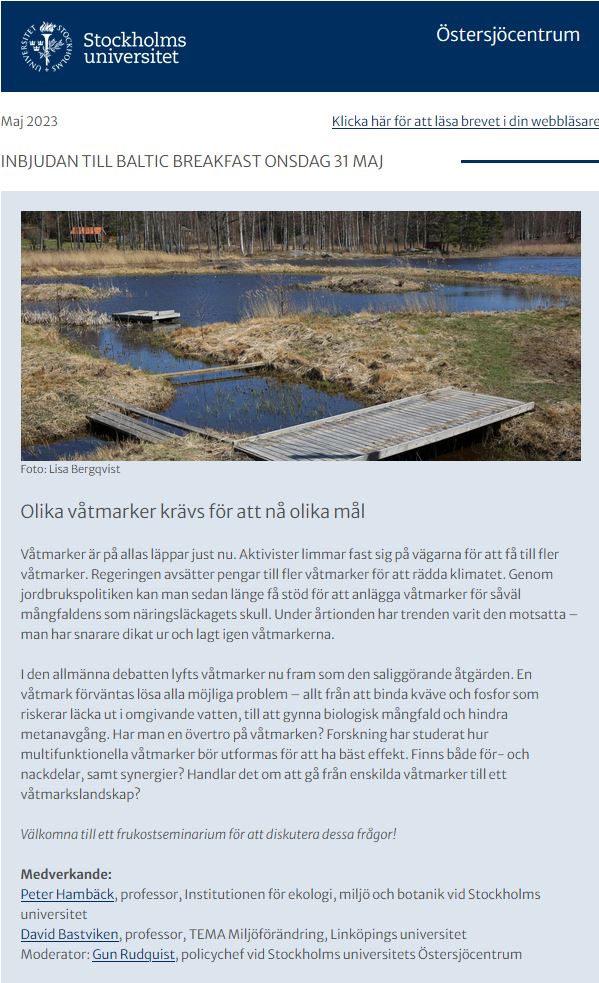
Our latest paper acknowledged at ”Global Water Forum”
Our paper on Tradeoffs and synergies in wetland multifunctionality, recently published in Science of the Total Environment, was displayed at the Global water forum, with a new short summary written by Peter Hambäck. It can be found here: https://globalwaterforum.org/2023/02/23/tradeoffs-and-synergies-in-wetland-multifunctionality-a-scaling-issue/
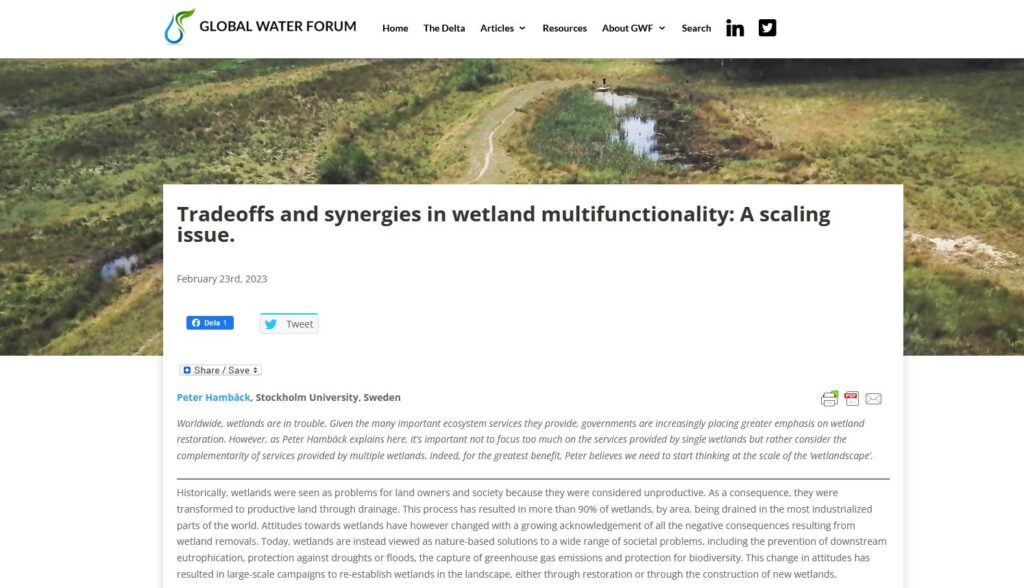
Today is International wetlands day!
We celebrate with a summer memory from last year and short movie from some of the wetlands, It can be seen here: https://fb.watch/irRLn3uxyr/

New paper published!
Now our paper on Tradeoffs and synergies in wetland multifunctionality have been published in the journal Science of the total Environment. It is a joint effort by several researchers in different fields and was initiated at a conference and workshop in Stockholm in October 2021 (se post further down for more details on that). It can be found as full text pdf here.
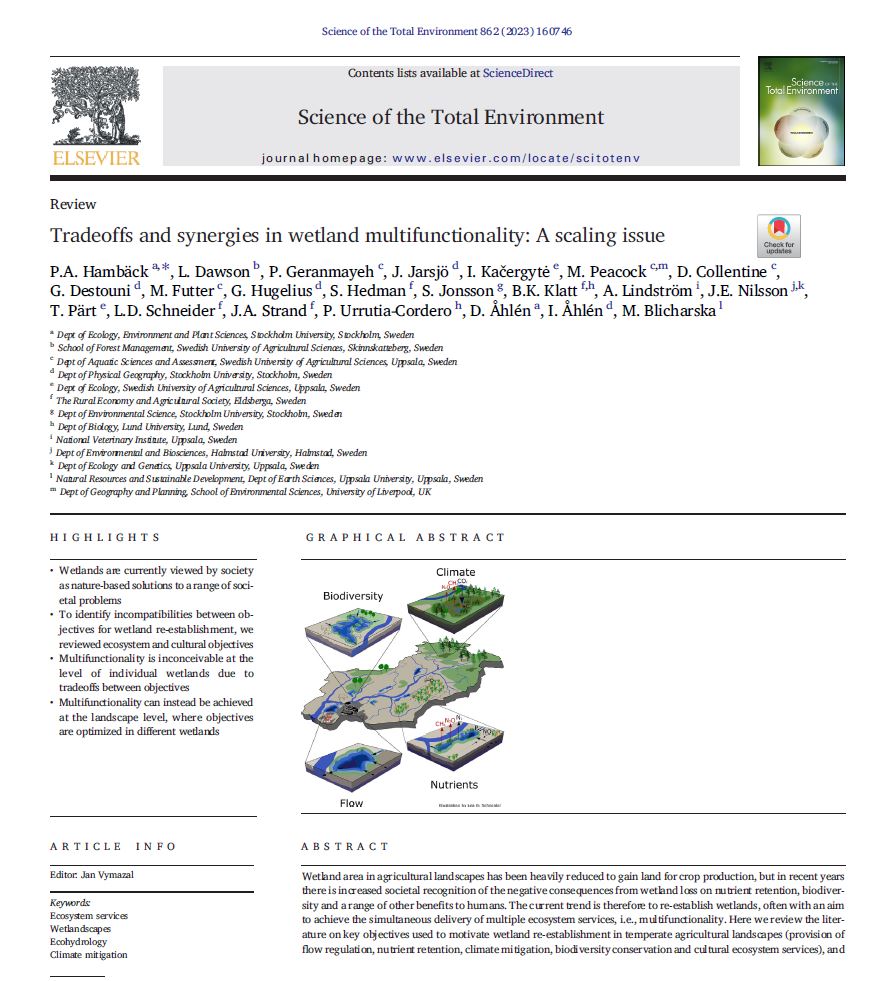
Project meeting at Stockholm University on data handling
We had a meeting in Stockholm the 23-25 November to discuss the hydrology and bathymetry data. The enormous amount of data generated from the water level meters and the bathymetry surveys needs to be processed in an efficient way to be able to evaluate. Now we have developed a strategy to incorporate the data into GIS for further handling and evaluation, and to produce bathymetry maps of all the wetlands.
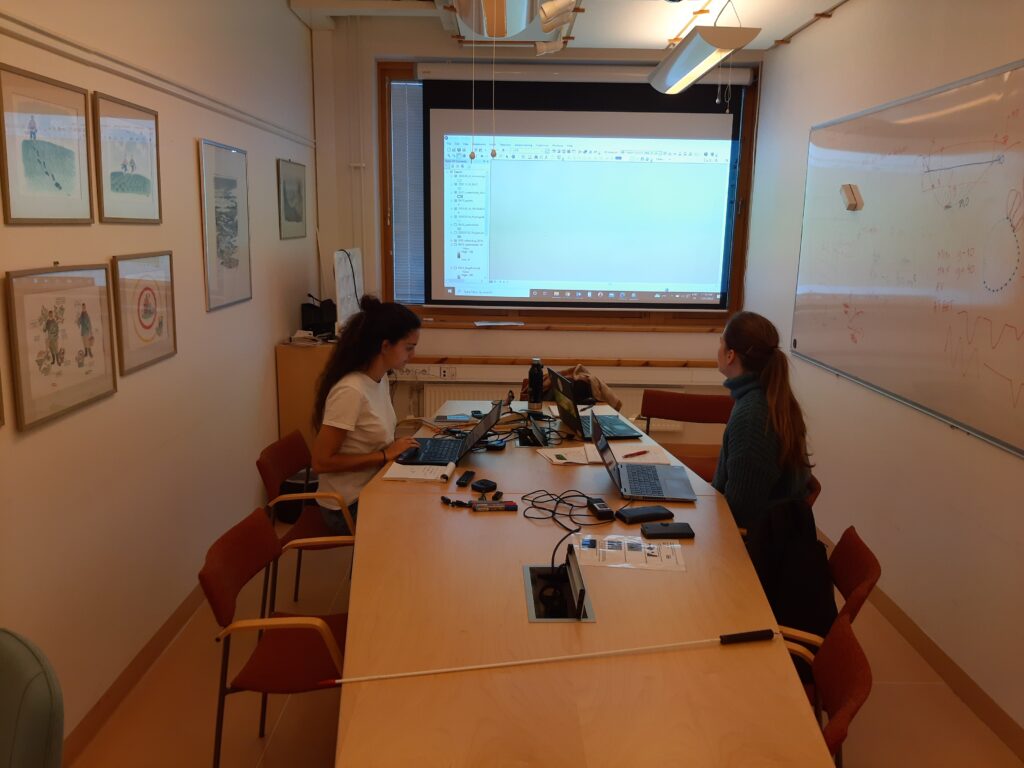
Meeting with landowners
The 26 of November, we arranged a combined Christmas dinner and workshop at Hushållningssällskapets workplace Lilla Böslid, Halland for all landowners in our projects, where we also presented results from our studies. Peter and David from Stockholm university gave talks about the invertebrate results and a citizen science project on mosquitoes that we are planning for next year. Ca 40 persons attended, and we got much positive feedback from the landowners.


No, more wetlands will not lead to malaria epidemics in Sweden!
The risk of getting back malaria in Sweden is sometimes suggested as a real concern in discussions regarding large state-funded efforts to re-create wetlands to mitigate climate change or reduce eutrophication and increase landscape biodiversity. The latest we have found regarding this is from a magazine published by Derome where a professor in history, Kalle Bäck, calls the risk of malaria a “terrible consequence that nature conservationists have missed”, see attached article (in Swedish). The problem is that he is completely wrong.
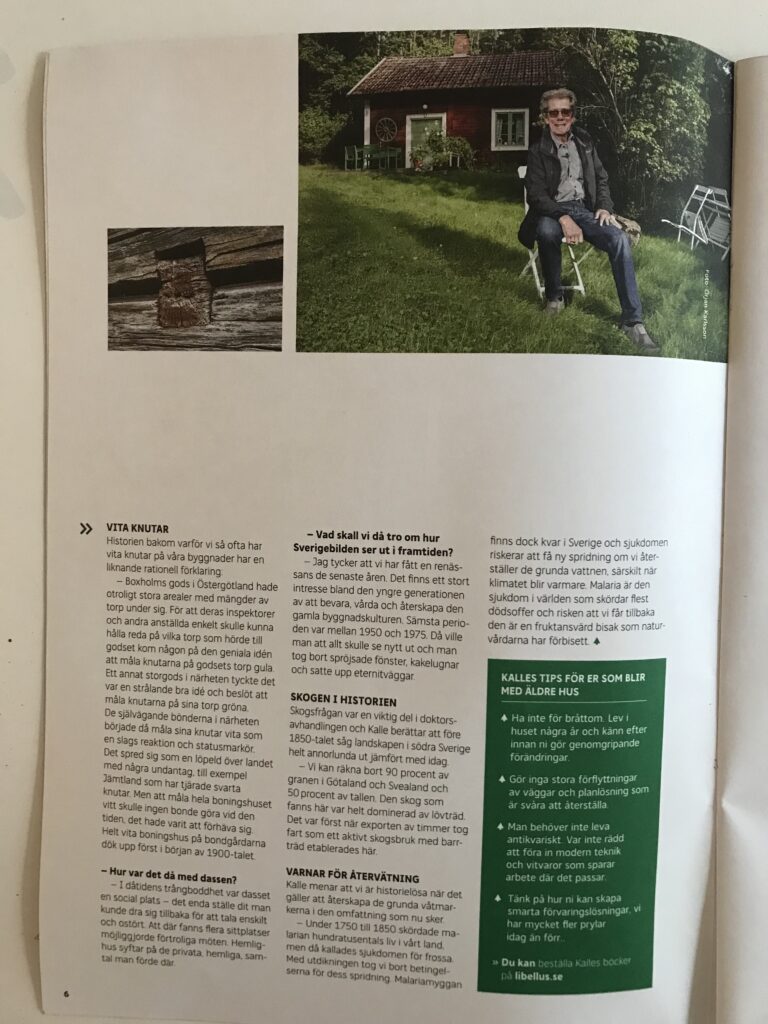
Anders Lindström at SVA, the National Veterinary Institute states:
“It is a strange statement about malaria that Kalle Bäck makes. Firstly, it can be stated that the malaria that existed in Sweden in the 18th and 19th centuries was caused by Plasmodium vivax. The parasite that Bäck refers to as causing the most deaths in the world is Plasmodium falciparum, that is, a completely different species. P. falciparum has never been found in northern Europe because it is too cold here for the parasite to develop in the mosquitoes. Plasmodium vivax can certainly also kill infected humans, but to a much lesser degree. During the period 1749 – 1820 an average of 1045 people died per year from malaria in Sweden. The disease was endemic and common along the coast from Blekinge up to Ångermanland and around Mälaren and Vänern. When there were epidemic outbreaks, it appeared all over southern Sweden.
The species of malaria mosquitoes responsible for the spread of malaria parasites overwinter as fully grown female mosquitoes. You can still visit almost any stable attic and find malaria mosquitoes. The dredging of wetlands certainly reduced the population of malaria mosquitoes, but as I said, the mosquitoes are still there and are not rare.
The fact that malaria disappeared in Sweden is considered mainly to be due to better housing standards. The mosquitoes thrive in dark and damp stables. When the housing standard was lower, there was no major difference between animal houses and residential houses. Often the animals were outdoors all year round. When the houses became warmer, brighter, cleaner and with lower humidity than before, the mosquitoes preferred to stay in the increasingly common animal stables. Since malaria mosquitoes almost always bite at night and there is food for them in the stables, fewer people were bitten and the transmission of malaria parasites decreased until it stopped.
The improved health care and the use of quinine also reduced malaria parasites. In order for us to bring back malaria in Sweden, it would be required that we get a significant part of the population infected by malaria parasites and at the same time bring back the 18th century housing standard and that the healthcare system fails to identify and treat malaria cases. “
A milestone is reached!
Now we have done the bathymetry measurements for all the wetlands! Sam and Sofia did the last one yesterday (the 111th). Great work!
Project group meeting 26-27 of May
We had a 2-day project group meeting at Lilla Böslid, Halland where we discussed among other things; current available data, future sampling strategies and forthcoming papers from the projects.
SEPA`s annual meeting on Wetland ecosystem services held at Halland
The annual meeting for the Swedish Environmental Protection Agency´s research grants on Wetland ecosystem services was held att Hushållningssällskapet Halland/LIFE-Goodstream the 17-18 of March. It was a hybrid meeting with ca 25 persons on site and ca 45 joining digitally. It was a very nice meeting (despite the weather during the field day) and we visited Halmstad University´s experimental set-up aswell as some of our sites in the Buffer project. All the 8 projects presented their work and we got oppertunities to good discussions and networking during the meeting.
Analyse of field experiment nest boxes
We have now started to analyze last summers field experiment with Osmia nest boxes in a hydrological gradient from the wetlands. We get data on nr of individuals, sex and occurence of dead or not developed individuals.


New Publication in Wetlands 2.0
This week a paper on trophic cascades involving fish, zooplankton, phytoplankton, algal mats, bumle bees and oil seed rape, in a mesocosm experiment conducted in the project, was publishen i OIKOS https://onlinelibrary.wiley.com/doi/full/10.1111/oik.09047
The results also have implications for the Buffer project regarding e.g. polinator behaviour during droughts and under different nutrient status of the wetlands.
Popular scientific article submitted
Today we submitted a short article to inspire the public to explore wetland shorelines in order to experience the high biodiversity of insects and spiders. It is based on the findings in our projects which also are explained in the article. Results on beetles, spiders, flies, dragonflies and pollinators are presented. It will be published in ”Hallands Natur” (in Swedish).
Conference and work shop in Stockholm
The whole Biowetland project group attended a conference at Stockholm University (Multi-functional wetlands) the 27 of October and thereafter a 2-day workshop with ca 20 researchers discussing a joint paper on Constructed wetlands and synergies and trade-offs of wetland functions. A very good and rewarding 3-day event at Stockholm University and Tovetorp research station. Below are some photos from the conference and the workshop.
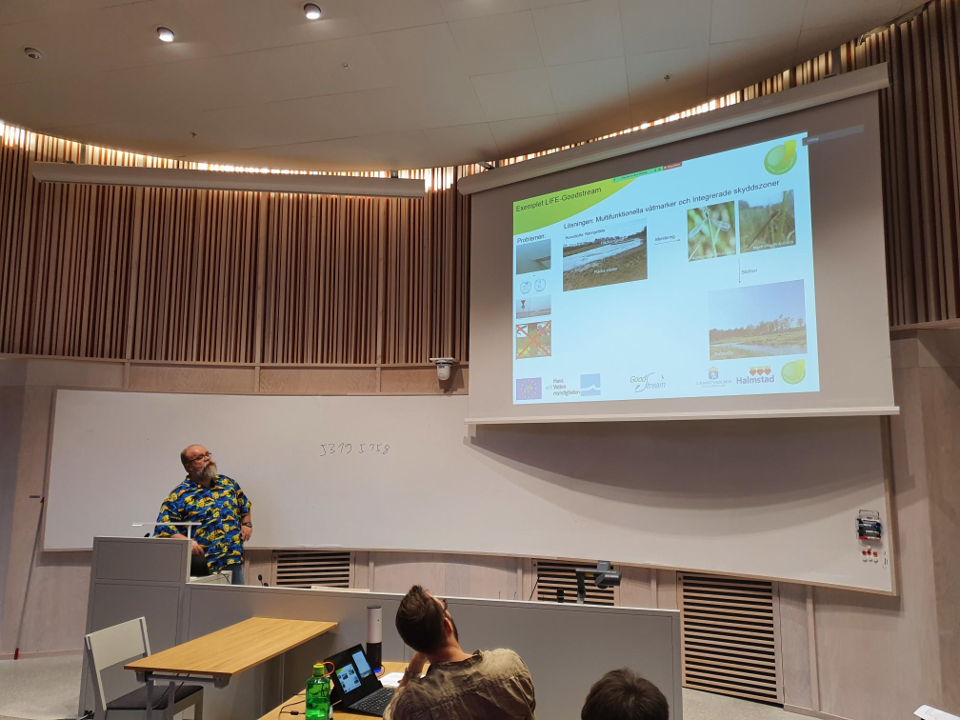
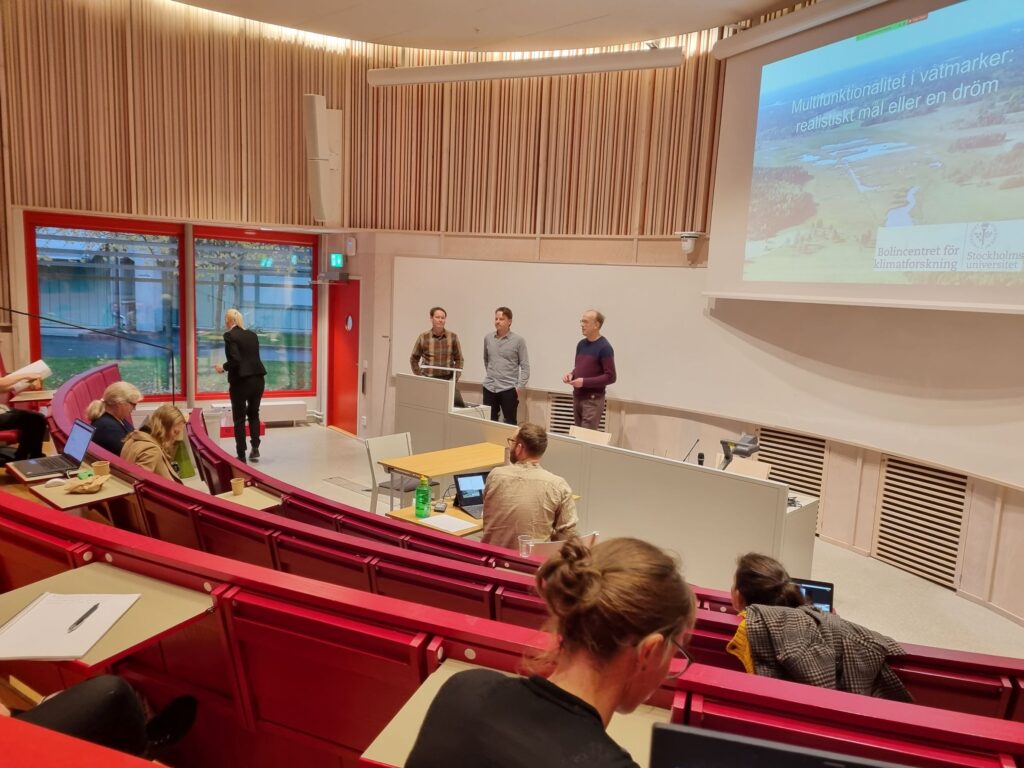
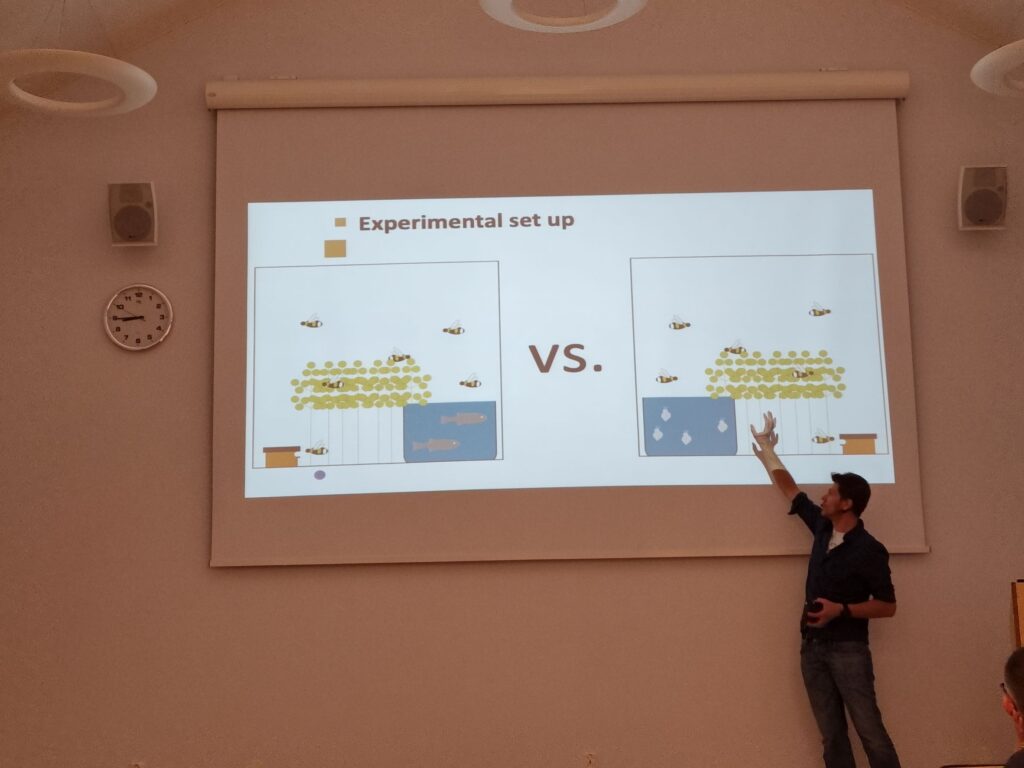

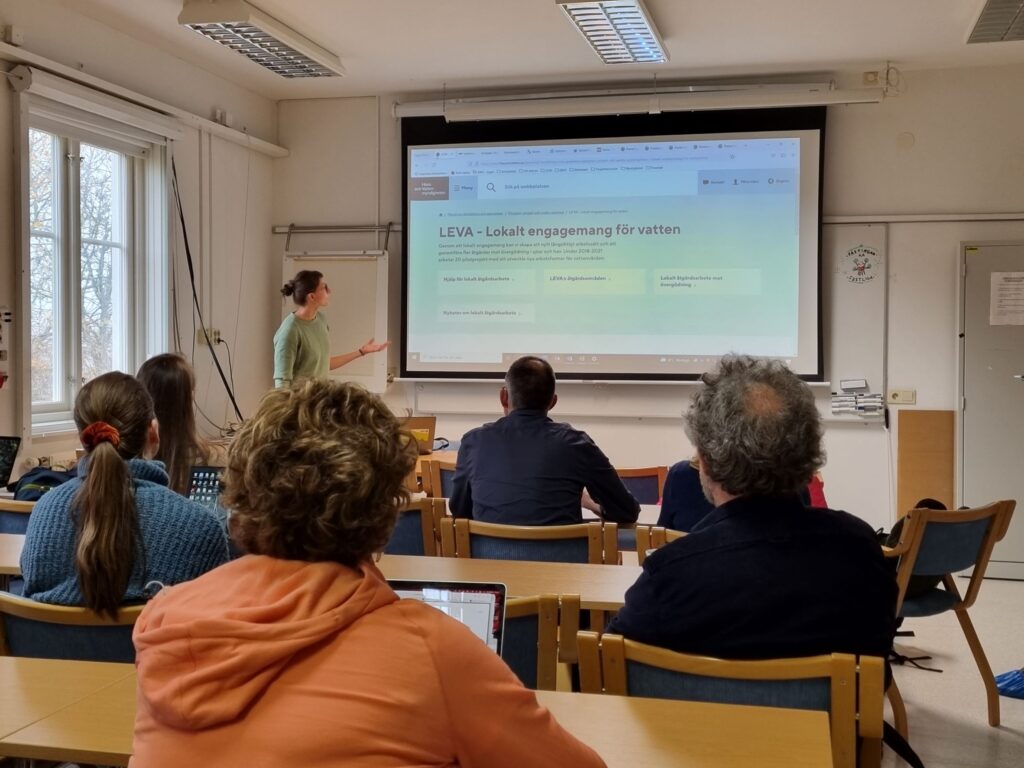
Maintenance of water level meters
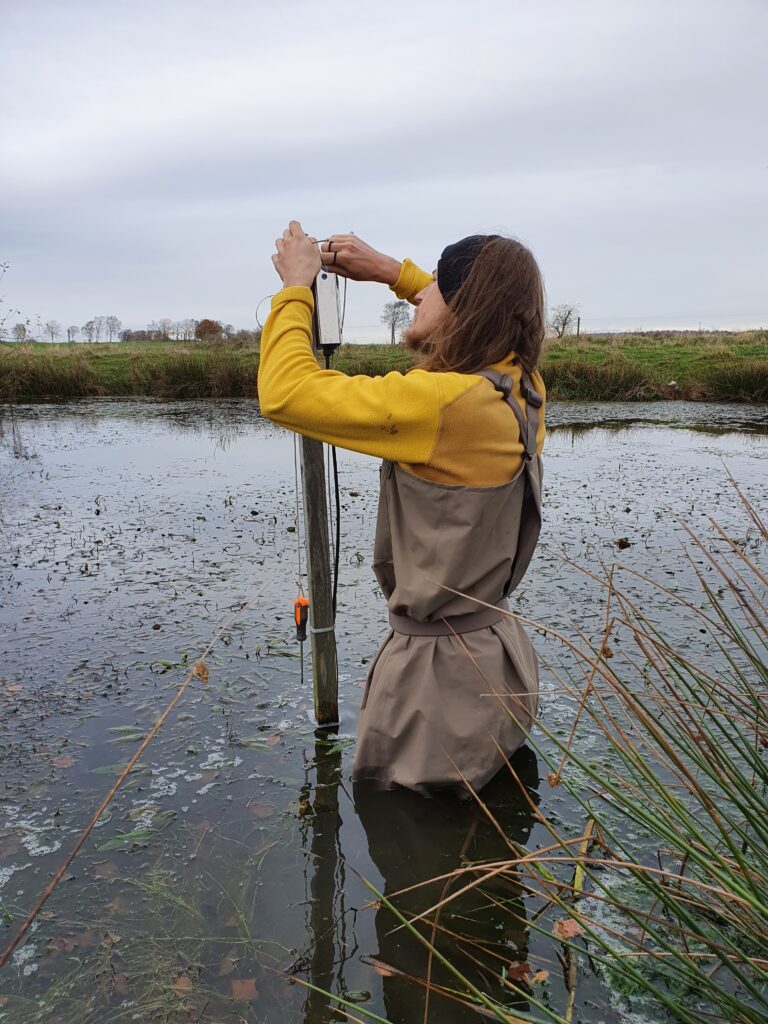
Some time must be spent on mainenance on the 125 water level meters. Here Sam changes batteries in one of them
Field experiments with pollinators finished – emptying of wetlands postponed to next year
The field material (various traps nests and nest boxes) from the pollinator field experiments that now have been terminated, have been collected and stored. Due to the very high rainfall in August we could not carry out the planned test with effects of draining some of the wetlands. We have however got permission from the landowners so we will do it next year (weather permitting). This experiment (emptying of ca 14 wetlands) is part of all 3 projects (Wetlands as buffers, Management of wetlands and Wetlands 2.0) and will hopefully give answers to different research quesitons in the three projects.

New field experiment with effects of PFAS on Red mason bee
We investigate the effects of PFAS on the solitary bee Osmia bicornis, by placing nests with pupae in an industry area with known very high PFAS-concentrations in the water, and in the agricultural areas with low concentrations as control. The map shows the location of the nest boxes.
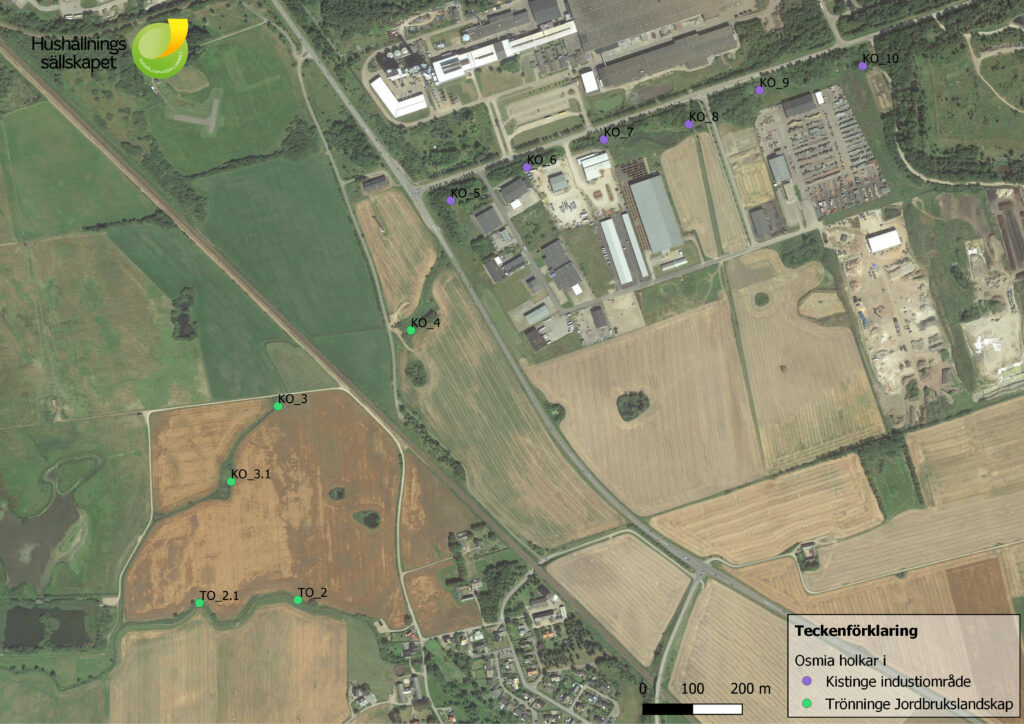
Thesis work on pollinators and water
Two students from Halmstad University are doing their thesis work using our field experiment with the 45 nest box packages in the projects Wetlands 2.0 and LIFE-Goodstream. Irina Nilsson has investigated effects of distance to water and difference in nest hole occupancy between industrial areas vs. agricultural areas. Maria Holmgren has studied the effect of different wood types of the nest boxes.
Examples of nest boxes at a short (narrow) litoral zone with low elevation
The photos show one of the 14 wetlands where we have the nest boxes located in a gradient from the water. This wetland (D28) has relatively short litoral zone.

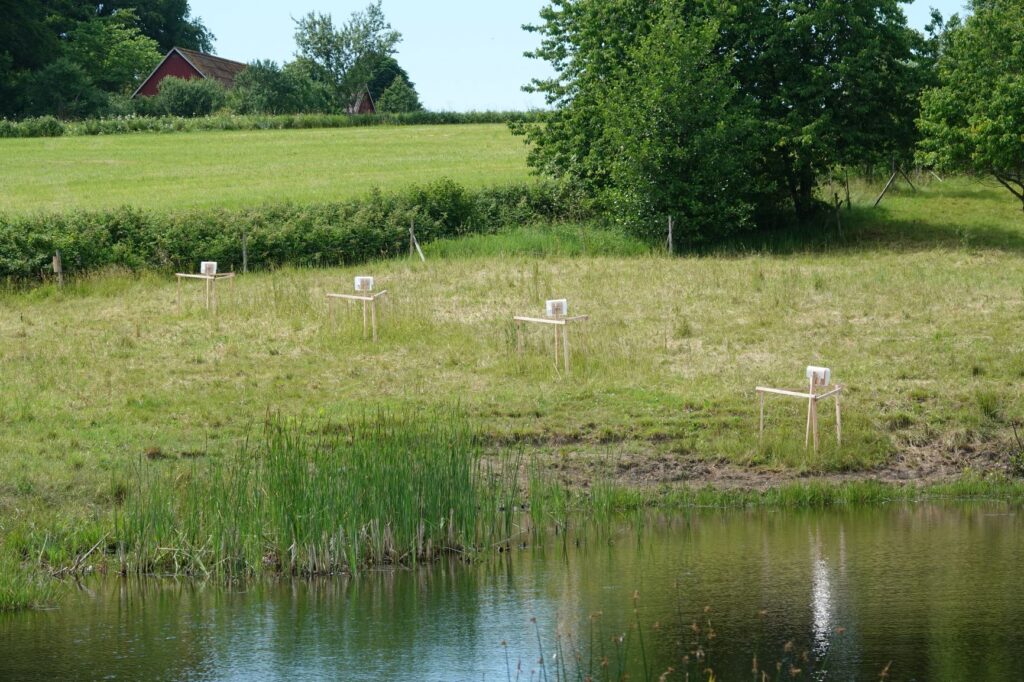
Field survey continues
Since the weather conditions are important Björn and Lea had to work throughout the weekend to be able to complete the sureveys of the 14 wetlands during similar weather.
Field survey has started

Now the surveys of the 14 wetlands have started
Preparations for surveys in the field experiment
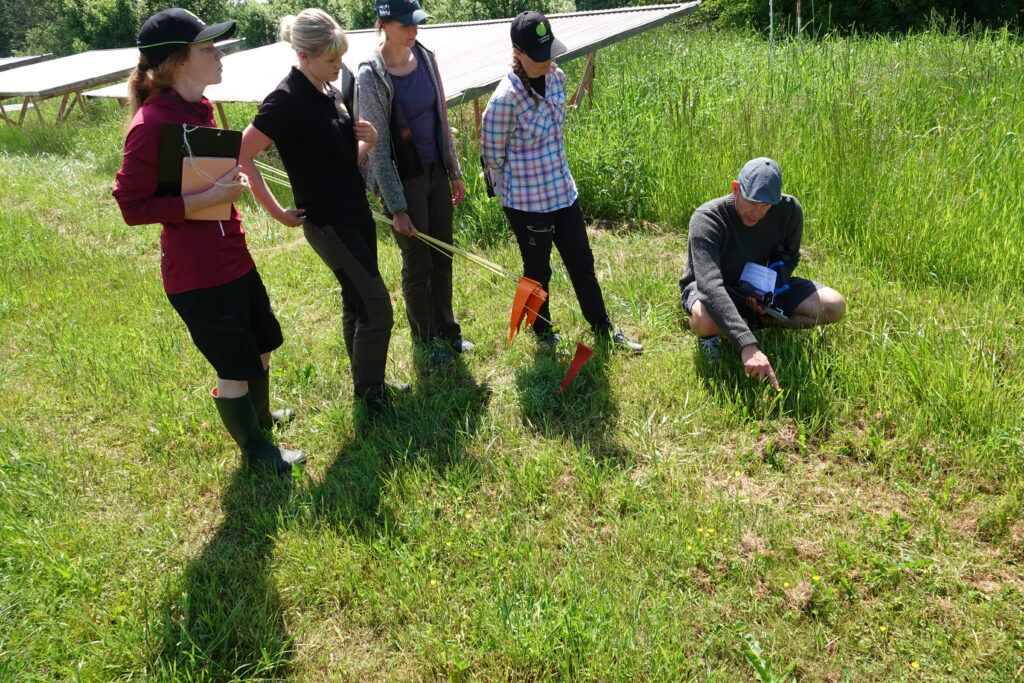
Today we tested the methods of the surveys in the field experiment. We tested the method at our own land at LIlla Böslid. In transects going from the wetland shoreline and 30-50 m perpendicular to the wetlands we will investigate frequency of flowers (flowering units) and the pollinators. The data will be related to e.g. elevation, soil moisture and surrounding landscape structures in the near area.
Nest boxes deployed for study on droughts and importance of water bodies for pollinators in the agricultural landscape
This week Björn and Sofia placed 56 specially designed nest boxes at 14 wetlands to study how distance from water affect nesting performance. At each wetland nest boxes were placed in gradients from the water. 7 of the 14 wetlands will later in summer be drained to simulate drought to investigate effects of catastrophic hydrological events on the pollinators.
All trap nests are collected
Now we have collected all the trap nests located at the 85 wetlands.The map shows the location of all trap nests.

First meeting with the WetKit project
Today we had a very good meeting with the researchers from the project WetKit (www.wetkit.weebly.com). We will cooperate regarding sampling sites and sampling strategies and will thus get more data from the sites leading to better understanding on e.g. multi-functionality of CWs. See also under the tab Networking
Nest boxes
The nest box packages are designed to test effects of hole diameter and wood material on the nesting frequency of different species of solitary bees and wasps. The locations of the package were designed so we can get answers to questions on effects of distance from CWs, and effects of nearby surroundings. The map shows the locations of the 45 nest box packages and also the locations of 8 of the 85 trap nests, located in the stream Trönningeån drainage area.
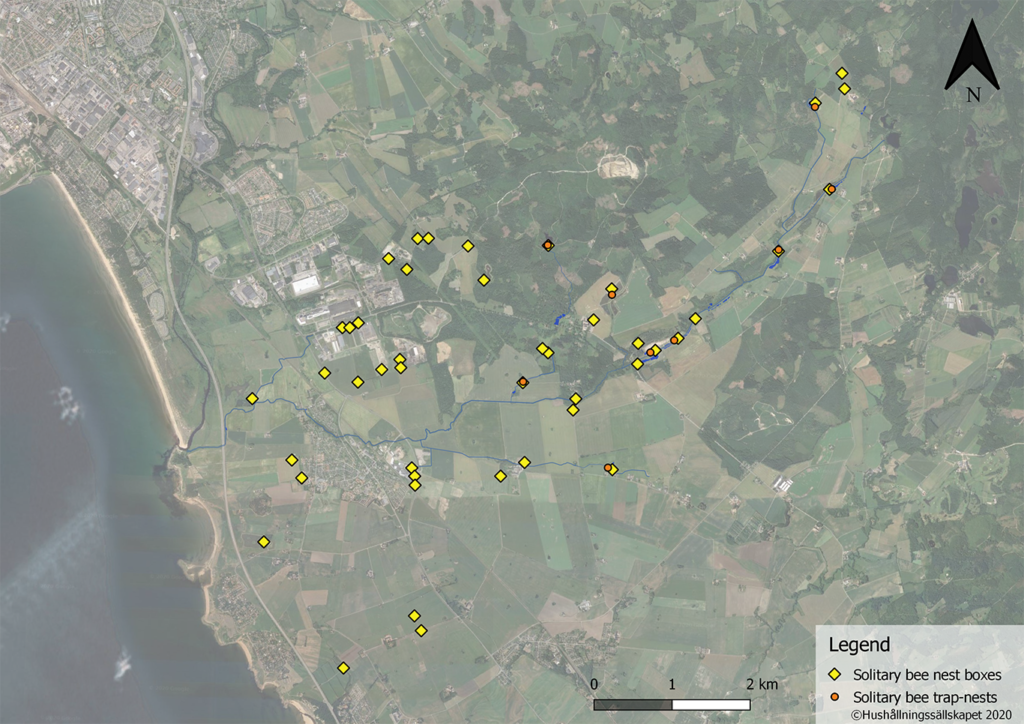
Networking
We are networking with the project LIFE-Goodstream www.Goodstream.se and are using the large number of artificial nests that are planned to be deployed in the drainage area of the stream Trönningeån. In total 275 nest boxes are used. The nests boxes are bundled into 45 different “nest box packages”.

Transect walks
In June we have done surveys of flowering density and pollinators by transect walks in the 50 CWs.

Trapnest update
Now all trap nests have been located at the CWs. In total 85 trap nests are deployed. In each trap nest there are 23 nesting tubes, giving at total of 1 955 available nests at the 85 CWs.
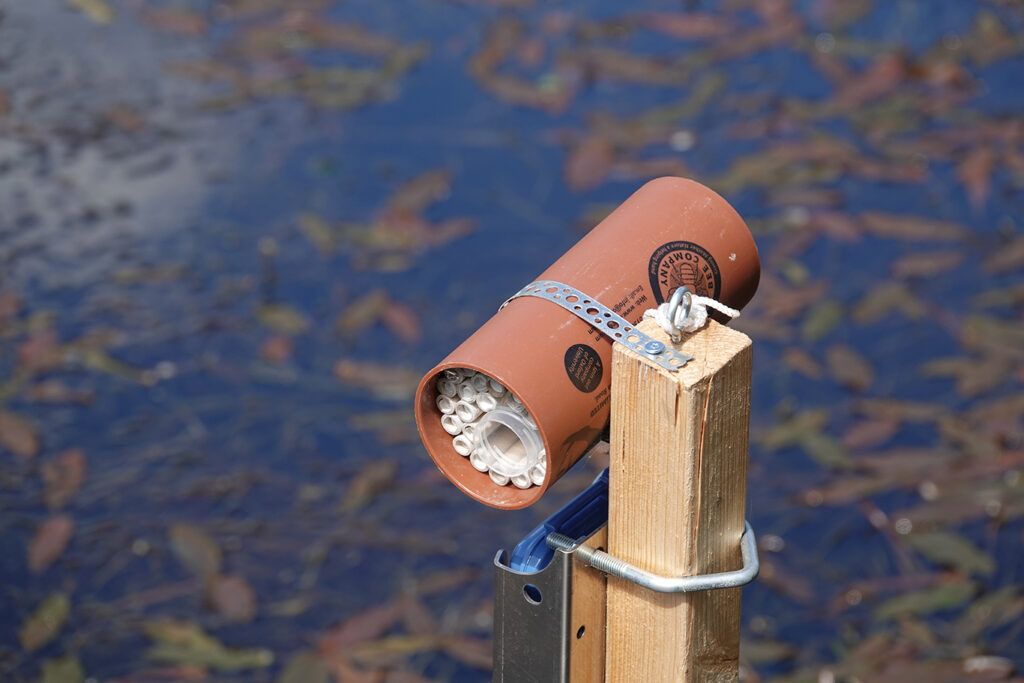
Pollinators
We have done the first sampling of pollinators using pan traps (colour bowls). 3 traps of different colour have been placed at 50 CWs.
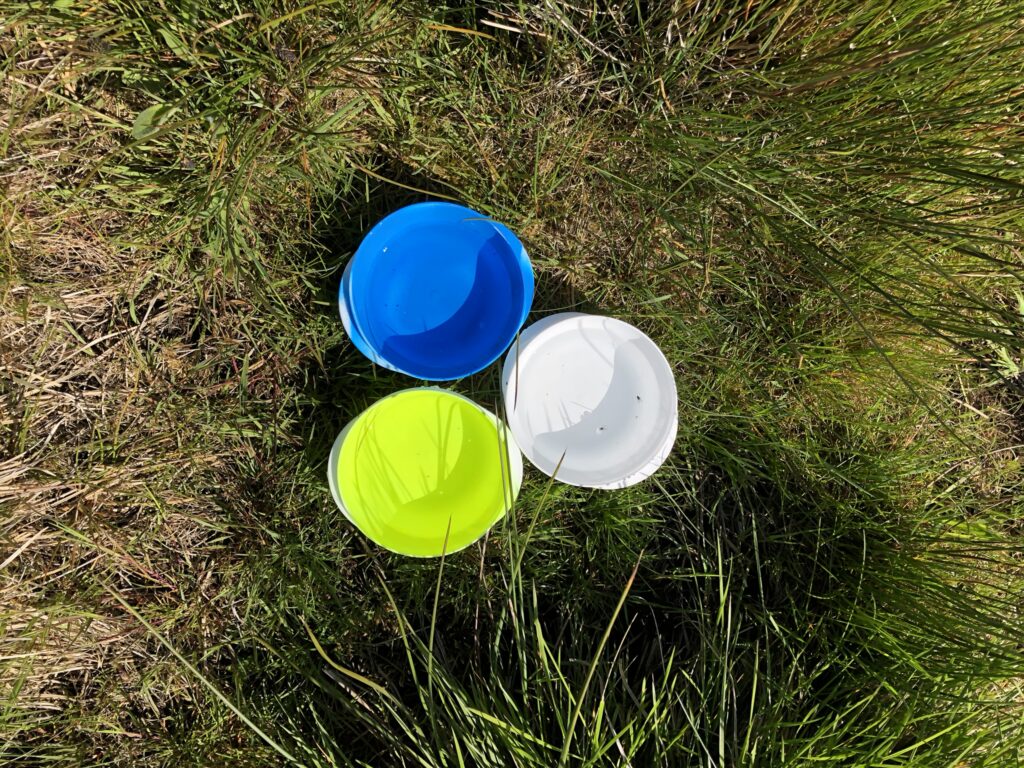
Meeting
We had a meeting with our project partners from Stockholm University to discuss the biodiversity sampling in our different projects.
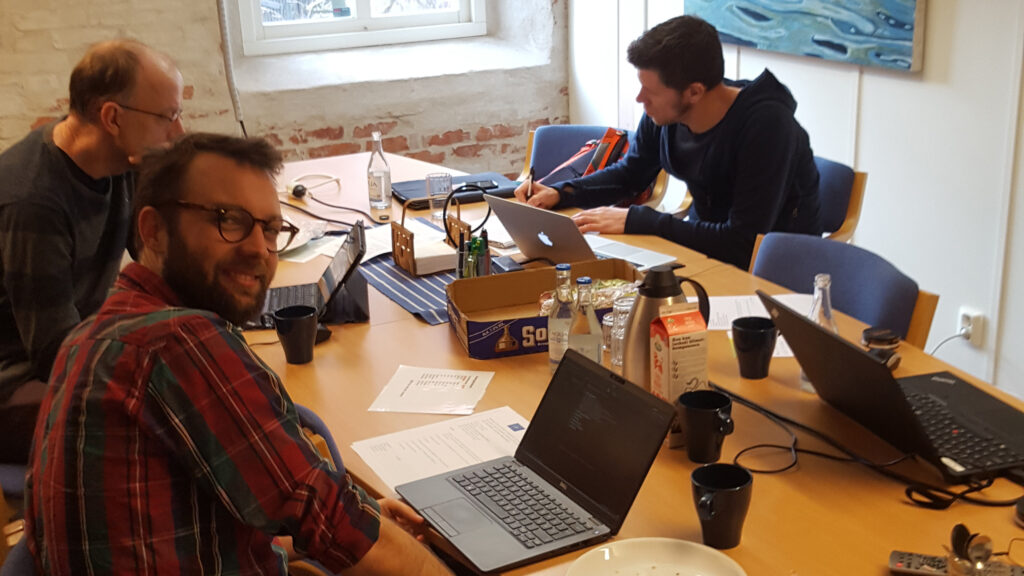
Trapnest
We have started to place trap nests in constructed wetlands (CWs), and we use the same CWs we have selected for the project “Wetlands as Buffers” (see data on that project on the tab at the Homepage). The trap nests are placed on the wooden pole supporting the water level meters in the different CWs (see photo)

BioWetland is launched
Welcome to BioWetland!
Wetlandscapes & Biodiversity – Buffer, Biodiversity and Bees
Research on how constructed wetlands(CWs) function hydrologically in a river basin perspective and how hydrology and its interactions with wetland design, location and management affect the biodiversity in wetlands and at the landscape level, with focus on arthropods in terrestrial-aquatic boundaries and pollinators.
